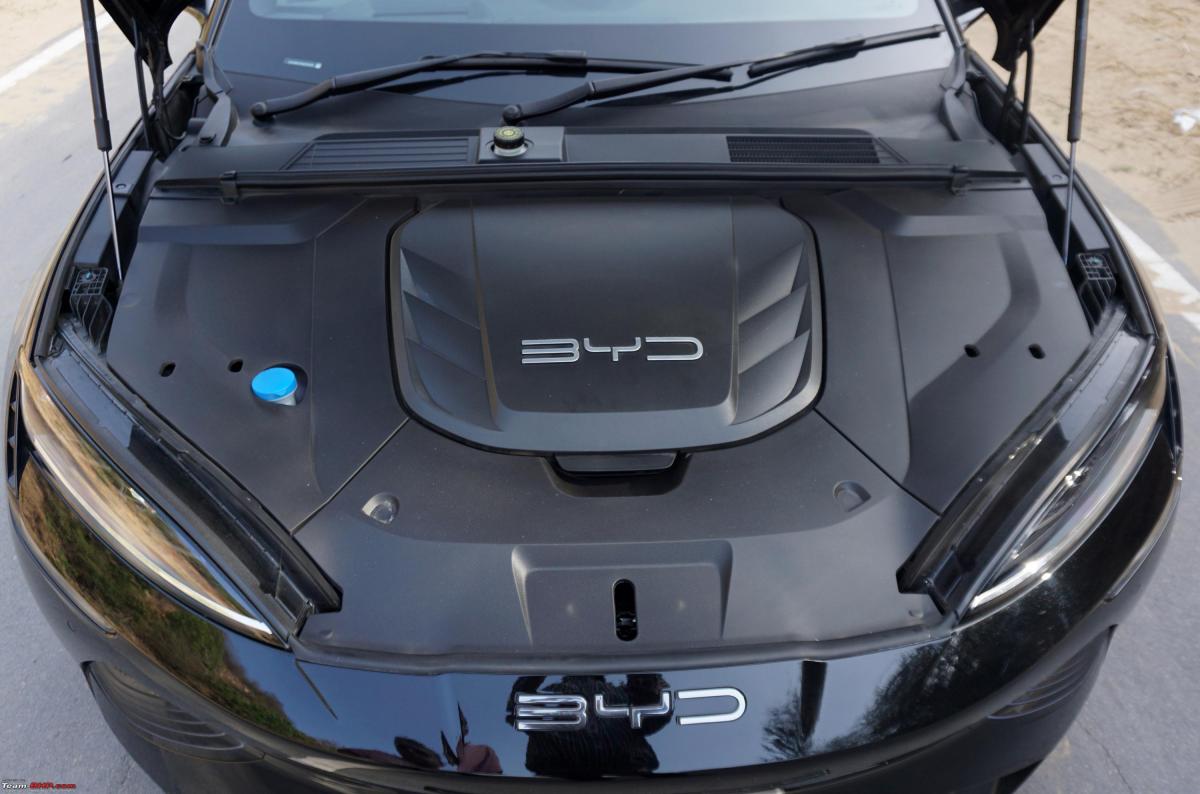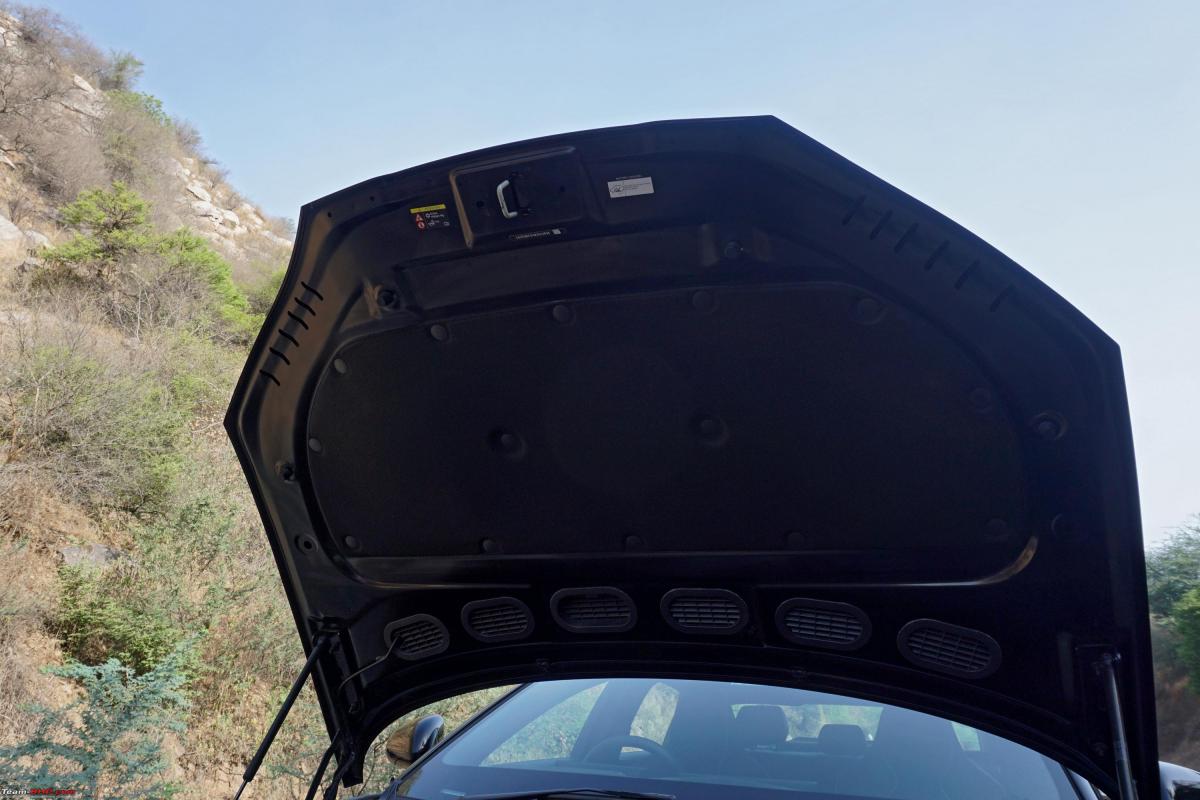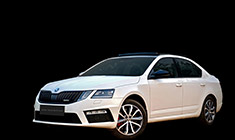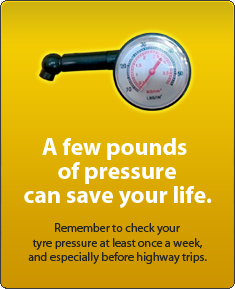News
2024 BYD Seal : Our observations after a day of driving
In a straight line, the BYD Seal feels stable. It doesn’t feel nervous and maintains its composure at high speeds.
Driving the BYD Seal Premium
Powering the BYD Seal Premium is a Permanent Magnet Synchronous Motor that puts out 308 BHP and 360 Nm torque:

The Seal is built on BYD's e-Platform 3.0 which is EV-specific and is not based on an IC engine platform like most EVs available in India. Hence, the design of the batteries and powertrain has been done keeping the EV-specific requirements in mind. This platform comes with cell-to-body technology which integrates the battery and the vehicle body floor together making the battery's sandwich structure evolve into a sandwich structure for the complete vehicle. The battery pack is sealed as part of the body using an integrated sealing plate design, which BYD claims, increases the rigidity of the floor by 13 times. BYD claims that the Blade battery has passed the nail penetration test and an extreme strength test that saw a 46-tonne truck driving over it. The Blade battery has a claimed driving mileage of more than 5,00,000 km.
We got to drive the Premium variant of the Seal which comes with an 82.56 kWh battery, rear-wheel drive and an electric motor that develops 308 BHP and 360 Nm. With your foot on the brake pedal, hit the Start/Stop button to bring the electric motor to life. Shift to ‘D’ mode, take your foot off the brake pedal and the car gets off the line in the smoothest way possible. There is faint music that is played on the outside of the car while driving around at low speeds. It’s to let the pedestrians know that there’s a car coming. Build some speed and the music stops.
If you primarily drive around in the city, you will appreciate the Seal’s smoothness. The power delivery till part throttle is linear and predictable. No jerks from gearshifts and no engine sound means it is an extremely refined experience. Floor the A pedal and you will be greeted with instant acceleration. Performance is brisk with power available right from the get-go. BYD claims a 0-100 km/h time of 5.9 seconds, which is believable. You’ll definitely be ahead of most of the IC engine cars when the signal turns green. If you enjoy instant acceleration and are experiencing an electric car for the first time, this car might just make you a convert. If you’ve driven some of the other EVs, you will notice that the acceleration is very similar to others in this range.
Out on the highways, the Seal is just as good as in the city. Getting up to triple-digit speeds and maintaining them is effortless. Want to make a quick overtake, no worries there. Just bury the accelerator pedal and you will zoom past the car ahead with ease. You'll hit silly speeds effortlessly and not even realize it due to the lack of drama (engine noise, etc.). However, if you drive hard, the range will drop faster. This is also why you will see EVs that are driving longer distances sticking to the middle lane and cruising at 80-100 km/h (which is the best cruising speed for the current lots of EVs).
There are 3 driving modes to choose from and unlike some other cars, these aren't gimmicky. They're mapped specifically for different driving styles and also change the steering weight.
- Normal Mode: This is the default mode to drive in and works well in the city as well as on the highway. It is a good balance of power and economy. The steering is light in this driving mode.
- Eco Mode: When you want to extract maximum range, this is the mode to engage. The throttle response is dumbed down which results in a smoother drive. However, you never feel that the car is lacking power. There’s still enough power on tap to keep up with the traffic and make those quick overtakes. We found this mode to be the best for driving in the city. The difference in steering weight from normal mode is very little. It almost makes the Normal mode redundant.
- Sport Mode: The throttle response is sharpened, but power is still delivered linearly. It doesn't feel jerky for day-to-day city driving like some other EVs. Push hard and it provides tremendous acceleration but it is not as brutal as the Mercedes AMG EQS 53 or the Volvo C40 Recharge for that matter. One thing to note is that driving in Sport mode eats up battery faster. So it's best to use this mode on the highways when you want to have some fun while driving. The steering is firmed up in this mode. The brakes feel a little sharper too.
Insulation sheet under the bonnet:

Regenerative Braking
BYD has kept it simple with regenerative braking. There are only 2 levels – Standard and High. The Standard level is barely noticeable and if you have the car in this mode, you might end up using the brakes a lot. The High level very much resembles engine braking in IC engine cars. It’s not very intrusive and you won’t be getting a head nod every time you lift off the accelerator. It’s great for driving around in the city as well as on the highways. People wishing to do hypermiling with the Seal will wish for stronger regeneration from the motor.
Noise, Vibration & Harshness (NVH)
As is the case with EVs, the Seal is also super quiet. There’s no engine or gearbox to make any noise, so the overall driving experience is silent. The windshield and front windows feature soundproof double-glazed glass making the car cabin extremely quiet.
At highway speeds, the wind noise is well controlled and the tyre noise is par for the course. The motor spins silently at high speeds and the whine is very well controlled.
Range
The BYD Seal Premium has a claimed range of 650 km as per NEDC (New European Driving Cycle). Given the rising demand for EVs, there are plenty of charging stations popping up everywhere, which ought to take care of range anxiety as well. There are many apps and websites like pulseenergy.io, plugshare.com, etc. that list out all the charging stations near you. At the end of the day though, remember the golden rule = EVs are best charged where they are parked (either at your office or home).
Charging
When you buy a BYD Seal, you get a 7 kW home charger. The charging time with AC Charging port – Type 2 (7 kW) from 0% to 100% is 12-16 hours. The charging time with a DC charging port - CCS 2 (110 kW/150 kW) from 0% to 80% is 45 minutes. BYD claims that 15 minutes of charging a 150 kW charger adds up to 200 km of driving range. You also get a 3kW portable charger that can be plugged into any 15 Amp socket (the larger 3-pin sockets used for ACs and fridges), but that would take a very long time to charge from 0-100%. If you ever run out of battery, you can always contact BYD’s roadside assistance. You get 6 years of roadside assistance with the Seal.
Suspension

Ride Comfort
The Seal gets a double wishbone suspension at the front and multi-link suspension at the rear. The car rides on 19-inch wheels shod with 235/45 section tyres. Low-speed ride is firm and most cracks and bumps on the road are felt. While the ride is not uncomfortable, it is far from plush. What's nice is that the suspension works silently. Big potholes do register themselves inside and you will have to be careful while tackling them. The recommended tyre pressure is a rather high 42 psi and at this pressure, you do feel a lot of the road. Dropping the pressure while driving in the city might make the ride more comfortable.
Handling & Dynamics
In a straight line, the Seal feels stable. It doesn’t feel nervous and maintains its composure at high speeds. Going over some undulations or expansion joints will result in a fair bit of vertical movement though.
Coming to handling, the turn-in is good but not very eager - very Mercedes-like. The car has a 50:50 weight distribution (over front & rear axles). Body roll is controlled and the car feels fluid and composed on winding roads although not very tactile compared to say, a BMW.
Steering
The electric power steering is a nice unit and easy to operate as well. It is very light at city speeds which makes it very user-friendly. The steering weighs up fairly well on the highways. It is accurate, but relays little feedback.
Braking
The Seal Premium has ventilated and drilled discs at the front and ventilated discs at the rear. All in all, the car has good stopping power and emergency braking situations are handled well too. On the other hand, the brake pedal lacks feel and takes some time to get used to.
Continue reading the discussion on the BYD Seal on our forum.

















